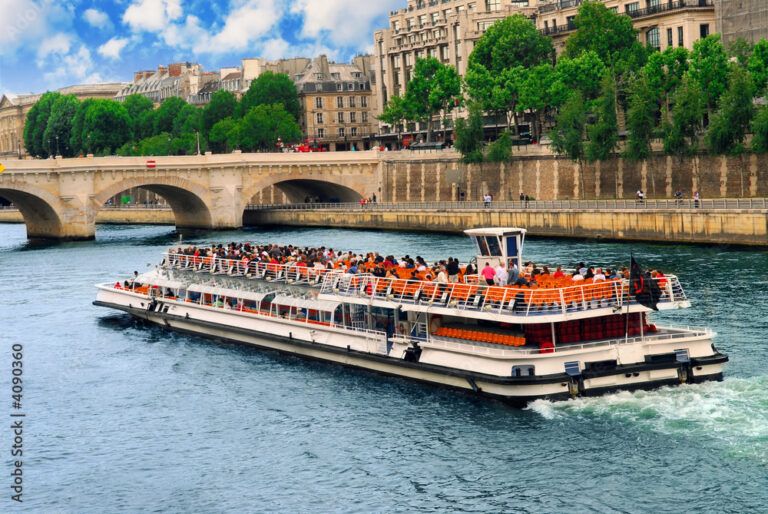Essential Thai Greetings and Basic Phrases to Enhance Your Travel Experience
Thailand, often called the “Land of Smiles,” offers a vibrant mix of culture, natural beauty, and hospitality. While many locals speak some level of English, taking the time to learn a few essential Thai greetings and basic phrases can greatly enrich your travel experience. Whether you’re navigating bustling markets, ordering street food, or engaging with locals, speaking even a little Thai will show respect for the culture and open doors to more genuine interactions. In this guide, we’ll walk you through the key greetings, polite expressions, and cultural tips to help you communicate more effectively and courteously during your stay in Thailand.
The Importance of Learning Basic Thai Phrases
Imagine visiting a country where you barely understand the language but make an effort to greet people in their native tongue. The smiles, nods, and more welcoming responses you’ll get will make your trip significantly more enjoyable. Thailand is no exception to this. In fact, the Thai people greatly appreciate when foreigners try to speak their language, no matter how basic the phrases.
Learning essential Thai greetings and polite expressions not only helps you navigate everyday situations more smoothly but also reflects your respect for the local culture. Moreover, Thailand is a nation deeply rooted in customs and social etiquette, and knowing a few local expressions will help you avoid potential misunderstandings or unintentional offenses. Plus, it simply makes your interactions more fun and meaningful.
Greetings in Thai: The Foundation of Polite Communication
One of the first steps to immersing yourself in Thai culture is mastering the art of greeting. Greetings in Thailand go beyond mere words; they involve respect, hierarchy, and the famous Thai smile. The most common way to greet someone in Thailand is to say “Sawasdee” (pronounced sah-wah-dee), which is akin to saying “hello” or “good day.”
- Sawasdee (สวัสดี): Hello, Good morning, or Good afternoon
This greeting can be used at any time of the day. The beauty of this word is that it’s versatile and suitable for all situations. - Goodbye: Interestingly, the word for “goodbye” is the same as “hello” in Thai, but context and tone help distinguish the difference.
When saying goodbye, simply say “Sawasdee” again, or “la korn” (ลาก่อน) if you want to specify that you’re parting ways.
Politeness in Thai: The Role of ‘Ka’ and ‘Krup’
One distinct characteristic of the Thai language is the use of gendered polite particles at the end of sentences. To sound more polite and respectful, men add “krup” (ครับ) and women add “ka” (ค่ะ) at the end of sentences. This subtle addition makes a significant difference in how your phrases are perceived.
For example:
- Men: “Sawasdee krup” (สวัสดีครับ)
- Women: “Sawasdee ka” (สวัสดีค่ะ)
Adding these polite particles is especially important when addressing strangers, elders, or anyone you want to show respect to, such as service workers or officials.
Polite Expressions to Use in Thailand
Being polite goes beyond just greetings. It’s essential to know how to express gratitude and other common courtesies while traveling around Thailand. Here are some phrases that will come in handy in your day-to-day interactions:
- Thank you: “Khop khun” (ขอบคุณ)
For politeness, men say “Khop khun krup” (ขอบคุณครับ), and women say “Khop khun ka” (ขอบคุณค่ะ). - You’re welcome: “Mai pen rai (krup/ka)” (ไม่เป็นไร)
This phrase, meaning “no worries” or “it’s nothing,” is often used when acknowledging thanks or brushing off a minor inconvenience. - Sorry/Excuse me: “Khor toht” (ขอโทษ)
When apologizing or trying to get someone’s attention politely, this phrase will prove useful. Again, men would say “Khor toht krup,” and women “Khor toht ka.”
Conversation Starters and Useful Phrases for Travelers
After mastering greetings and basic polite expressions, you may want to start brief conversations or ask for information. Below are some useful phrases that will help you break the ice with locals and make your travel experience smoother:
- How are you?: “Sabai dee mai?” (สบายดีไหม?)
This is a simple way to ask how someone is doing. You can respond with “Sabai dee” (สบายดี) if you’re doing well or “Mai sabai” (ไม่สบาย) if you’re feeling unwell. - What’s your name?: “Khun chue arai?” (คุณชื่ออะไร?)
If you’re curious about someone’s name, this polite question can help. To respond, say, “Pom chue ___” (if you’re a man) or “Chan chue ___” (if you’re a woman), followed by your name. - Where is the restroom?: “Hong nam yoo nai?” (ห้องน้ำอยู่ไหน?)
A practical phrase for any traveler, especially when you’re on the move in unfamiliar areas. - How much does this cost?: “Nii tao rai?” (นี่เท่าไหร่?)
When shopping in local markets, knowing this phrase is essential. Don’t forget to smile, as haggling is often part of the process. - I don’t understand: “Mai kao jai” (ไม่เข้าใจ)
A useful phrase when language barriers get in the way, especially if the conversation becomes too fast or complex.
The Significance of ‘Wai’: More Than Just Words
In Thailand, greetings are not just verbal but also physical. The traditional Thai greeting, known as the “Wai,” involves placing your hands together in a prayer-like gesture and slightly bowing your head. The Wai is a symbol of respect and is commonly used when greeting, thanking, or apologizing to someone.
When giving or returning a Wai, it’s important to know that the height of your hands indicates the level of respect. For example:
- Hands placed at chest level are appropriate when greeting people of the same social status or age.
- Raising your hands closer to your face shows greater respect, often reserved for elders or monks.
While foreigners are not necessarily expected to Wai, it’s a gesture that can go a long way in demonstrating cultural awareness and respect.
Practical Dialogues for Travelers in Thailand
To give you a clearer idea of how these phrases and greetings come together in real-world situations, here are a few sample dialogues you might encounter during your travels in Thailand:
At a Market
- Traveler: Sawasdee krup/ka (Hello)
- Vendor: Sawasdee krup/ka (Hello)
- Traveler: Nii tao rai krup/ka? (How much is this?)
- Vendor: Nii sam sip baht (This is 30 baht)
- Traveler: Khop khun krup/ka (Thank you)
In a Taxi
- Traveler: Sawasdee krup/ka (Hello)
- Taxi Driver: Sawasdee krup (Hello)
- Traveler: Pom/Chan ja bpai Sukhumvit soi sip (I’m going to Sukhumvit Soi 10)
- Taxi Driver: Sabai dee mai? (How are you?)
- Traveler: Sabai dee krup/ka (I’m well)
In both examples, the use of basic Thai greetings and polite expressions creates a smoother and friendlier interaction. Thai people are generally very patient with tourists, so even if your pronunciation isn’t perfect, they’ll likely appreciate your effort.
Cultural Tips for Travelers in Thailand
As a country rich in tradition, Thailand places great emphasis on etiquette and politeness. Beyond just learning basic phrases, being mindful of local customs will enhance your travel experience.
- Always use “ka” and “krup”: As mentioned earlier, these polite particles show respect and are important in everyday conversations. Use them liberally, especially with strangers, to avoid coming across as rude.
- Smile: Known as the “Land of Smiles,” Thailand values positive, non-confrontational interactions. Smiling is a great way to express goodwill, even if words fail you.
- Don’t touch people’s heads: The head is considered the most sacred part of the body in Thailand. Avoid touching anyone’s head, even playfully, as it can be seen as highly disrespectful.
- Respect the royal family: The Thai monarchy is held in the highest regard. Avoid any negative comments or jokes about the royal family, as this is a serious offense in Thailand.
Conclusion
Learning essential Thai greetings and basic phrases is one of the most rewarding ways to prepare for your travels to Thailand. With just a few simple words and phrases, you can unlock more authentic interactions, show respect for local customs, and feel more confident navigating various situations. While the language may seem challenging at first, the effort to communicate even in small ways will be warmly appreciated by the Thai people.
So, pack your bags, brush up on these key phrases, and get ready to immerse yourself in the warm hospitality of Thailand!
FAQs
- What is the most common greeting in Thailand?
The most common greeting in Thailand is “Sawasdee,” which can be used to say hello, good morning, and even goodbye. - How do I say “thank you” in Thai?
To say thank you, men would say “Khop khun krup,” and women would say “Khop khun ka.” - Is it important to use “ka” or “krup” when speaking Thai?
Yes, adding “ka” or “krup” at the end of sentences makes your speech more polite and respectful. - When should I use the Wai gesture?
The Wai is used to greet, thank, or show respect, particularly when addressing elders, monks, or people in authority. However, you can always “Wai” regardless to the status. - Can I get by in Thailand without knowing any Thai?
While many locals speak some English, learning basic Thai phrases will greatly enhance your interactions and show respect for the local culture. - How do you ask for the price of something in Thai?
To ask how much something costs, say, “Nii tao rai?”







